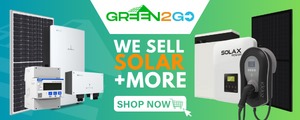I have a client on a Superdeal tariff from SSE, the Superdeal Meter has 3 sets of tails coming out of it feeding 3 DBs: (i) DB1 - the main board for the house, (ii) DB2 - a small board for all storage heaters and (iii) DB3 - an even smaller board for electric water heating. Very high electricity costs which is why the client is exploring battery storage and solar. Ordinarily I would recommend a single Hybrid Inverter with DC Coupled battery storage and the Inverter wired via suitable RCD protection (with an AC Isolator in-between) to the main DB which feeds all the circuits in the house. In this case however, if connected to DB1, that would mean that the batteries, when charging from the grid, would do so at the day tariff rather than the lower night tariff. I don't know how the Superdeal Meter works so here's my daft questions: Q1. Are all the circuits connected to DB2 (currently storage heaters) able to draw power 24 hours a day so in effect - is the meter just monitoring power consumed during a night time window to apply the lower tariff ? Q2. Are alI 4 of the Lines (1 from the 100A fuse, the other 3 to DB1, 2 & 3) in the meter connected to the same physical bus bar ? If the answer to Q1 is Yes then I could alternatively connect the Inverter to DB2 (I would have to upgrade it latest regs) and configure the batteries to charge during the night at the low tariff. If the answer to Q2 is also Yes then during sunny days the generated power would flow through DB2 and become available to DB1 and DB3 to reduce how much they draw from the grid. Its possible that the meters reading consumption for DB1/2/3 could go negative on occasion. Even if the superdeal tariff goes away and/or gets replaced with an Econmy 7, similar priciples could apply. I'd be interested to hear other views / ideas and whether anybody else has designed something similar for this kind of setup. Thank you.











